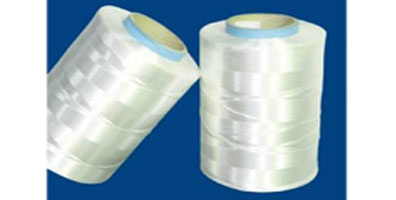Polyester fiber, commonly known as “Dacron,” is a synthetic fiber obtained by spinning polyester, which is formed by the polycondensation of organic dibasic acids and diols. It is abbreviated as PET fiber. PET fiber accounts for more than 60% of the world's synthetic fiber production.

Staple Fiber Classification:
Based on the fibers used for blending, long fibers are classified into cotton-type, wool-type, and medium-long type.
Classification of Polyester Filament:
Fully Drawn Yarn (FDY): Produced by low-speed spinning and high-speed drawing and winding. Characteristics include high strength, good yarn formation, low unevenness in fineness, strength, and elongation, and uniform dyeing.
Pre-Oriented Yarn (POY): When the spinning speed is 3000~3600/min, pre-oriented yarn can be produced. Characteristics include high pre-orientation, stable properties, good mechanical performance, high uniformity, and good processing performance.
FDY (Fully Drawn Yarn):
English Name: FULL DRAW YARN
Description: Synthetic fiber filament further produced by spinning and drawing. The fiber is fully drawn and can be directly used for textile processing. The yarn is stretched to an elongation of about 3% or less after passing through the spinneret and is not subjected to further deformation processing. It has a smooth appearance, high fiber cohesion, generally round cross-section (or other shapes depending on the spinneret), poor breathability, and a relatively hard hand feel (compared to DTY). It is generally used for its silk-like properties in clothing.
POY (Pre-Oriented Yarn):
English Name: PRE-ORIENTED YARN or PARTIALLY ORIENTED YARN
Description: Yarn wound at a spinning speed exceeding 3000 meters/min, with a higher orientation than conventional spun yarn but lower than drawn yarn, offering certain storage stability but still low crystallinity. The raw material yarn is generally POY (similar spinning process to FDY but with higher elongation). It undergoes false twisting (known as deformation in mainland China) processing, causing the fibers to separate and form a fluffy cross-section with irregular shapes, better breathability than FDY, and a softer hand feel (common for conventional yarn types). Currently, due to the development of ultra-fine and sea-island yarn types, it is mainly used for suede. Compared to undrawn yarn, it has a certain degree of orientation and good stability, often used as a specialized yarn for drawn textured yarn (DTY).
DTY (Draw Textured Yarn):
English Name: DRAW TEXTURED YARN
Description: Utilizing the thermoplasticity of synthetic fibers, it is produced by first twisting and then untwisting to obtain a spring-like shape, similar to twisted yarn but actually false twisted. False twisted textured yarn is commonly known as elastic yarn, available in high and low elasticity types. It is made using POY as the raw yarn, undergoing drawing and false twisting deformation processing. It often has certain elasticity and shrinkage.
Polyester fiber, or PET fiber, is a versatile and widely used synthetic fiber with various classifications and applications. FDY, POY, and DTY are different types of polyester filaments, each with unique properties and uses. FDY is fully drawn and used for its smooth and cohesive properties, POY is pre-oriented and used for its fluffy and breathable characteristics, and DTY is draw textured, known for its elasticity and spring-like shape. Understanding these differences helps in selecting the appropriate type of polyester fiber for specific textile applications.
This is the last one.